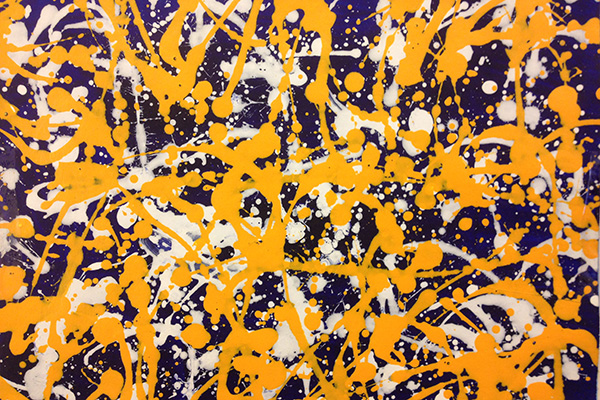Hate Modern Art If You Want To
The question, however, isn’t so much whether a work counts as “art” but whether we have to agree that it is objectively “brilliant” or “beautiful.” Perhaps it’s time that the art world actually heed its own philosophy and accept that beauty truly is in the eye of the beholder. In other words, not everybody has to like it.
A seeming lack of skill seems to be the tipping point for many modern art sceptics. A black square being hailed as a masterpiece seems to defy common sense, as does a shark in a box being worth two million dollars. At some point in your life you’ve probably flicked paint on some sort of canvas – the chosen method of the iconic Jackson Pollock. Modern art appears to be something you could have done, but didn’t; yet we seem to be expected to find it amazing regardless. In other words, an “us” and “them” mentality is fostered by the modern art community, in which the opinions of outsiders are dismissed as being the result of a lack of understanding.
The Modernist art movement took off during the twentieth century, and encouraged artists to experiment with, and challenge, traditional forms and perceptions of art. Considered to be the most influential artwork of the time, Marcel Duchamp’s “Fountain” – essentially a urinal on a pedestal, signed “R. Mutt” – was a (rejected) submission to the prestigious Society of Independent Artists in 1917. So what makes Duchamp’s effort so influential? The answer is likely that it directly questions what it is that makes something “art.” Conceptual art has since taken off, and artists increasingly test how far they can stretch people’s perceptions and understanding of what the medium entails.
There are countless stories of famous artworks being mistaken for junk. A Damien Hirst (the guy responsible for the two million dollar shark) once ended up in a charity shop. Last year, waste disposal experts threw out an Anish Kapoor. Clearly, these works do not scream “art” to all audiences.
This raises an interesting question. If somebody looks at a piece of art and sees something not worth keeping, should we seek to “enlighten” them and sympathetically dismiss it as a misunderstanding? Or should we perhaps question our own opinion? Sure, it’s “art,” but perhaps the standard is rubbish.
The basic philosophy underpinning much of the Modernist movement is that everything has some inherent beauty – you just have to look at it the right way in order to find it. Art, therefore, cannot be held to any objective standard. As a result, the question “what is art?” becomes unanswerable.
However, it is at this point that the “art world” tends to slide towards hypocrisy. Highly influential French theorist Roland Barthes pointed out that the meaning of a text is determined as much by the reader as it is by the writer. This applies equally to an artwork. A viewer’s level of artistic exposure and their personal preferences contribute just as much as – if not more than – the art itself to the viewer’s overall enjoyment.
Colin McCahon is an artist that I have consistently defended on the basis that his brilliance can only be truly appreciated by those with a contextual awareness of his background. A few days ago, however, I visited a dealer gallery in Wellington and found a McCahon sitting alone on a wall with a $65,000 price tag attached. I didn’t even recognise it as a McCahon at first – it was an unimpressive piece of tattered canvas sporting some black lines and a few words. $65,000 seemed ridiculous.
As I explained to the gallery attendant why I particularly liked another work in the room, however, he responded by saying that, “oh, my favourite is definitely the McCahon.” I left wondering why. For the first time, I found myself not simply taking such a statement for granted. How, I wondered, does a simple name make an artwork unquestionably “brilliant”? No artist is consistent, and yet today it seems that a name alone can trump any question of quality. Part of me continues to believe that there are no objective standards when it comes to art; another thinks that the time and effort put in to producing a piece is deserving of some emphasis.
Don’t hate on me for finding a square of red mind-blowing, because I certainly don’t hate on you for not. I might even sympathise, and agree how patronising it is that the “us” and “them” mentality assumes that some people simply “don’t understand.” Urban Dictionary defines an “art fag” as a “pretentious individual,” and I’m starting to whole-heartedly agree.



